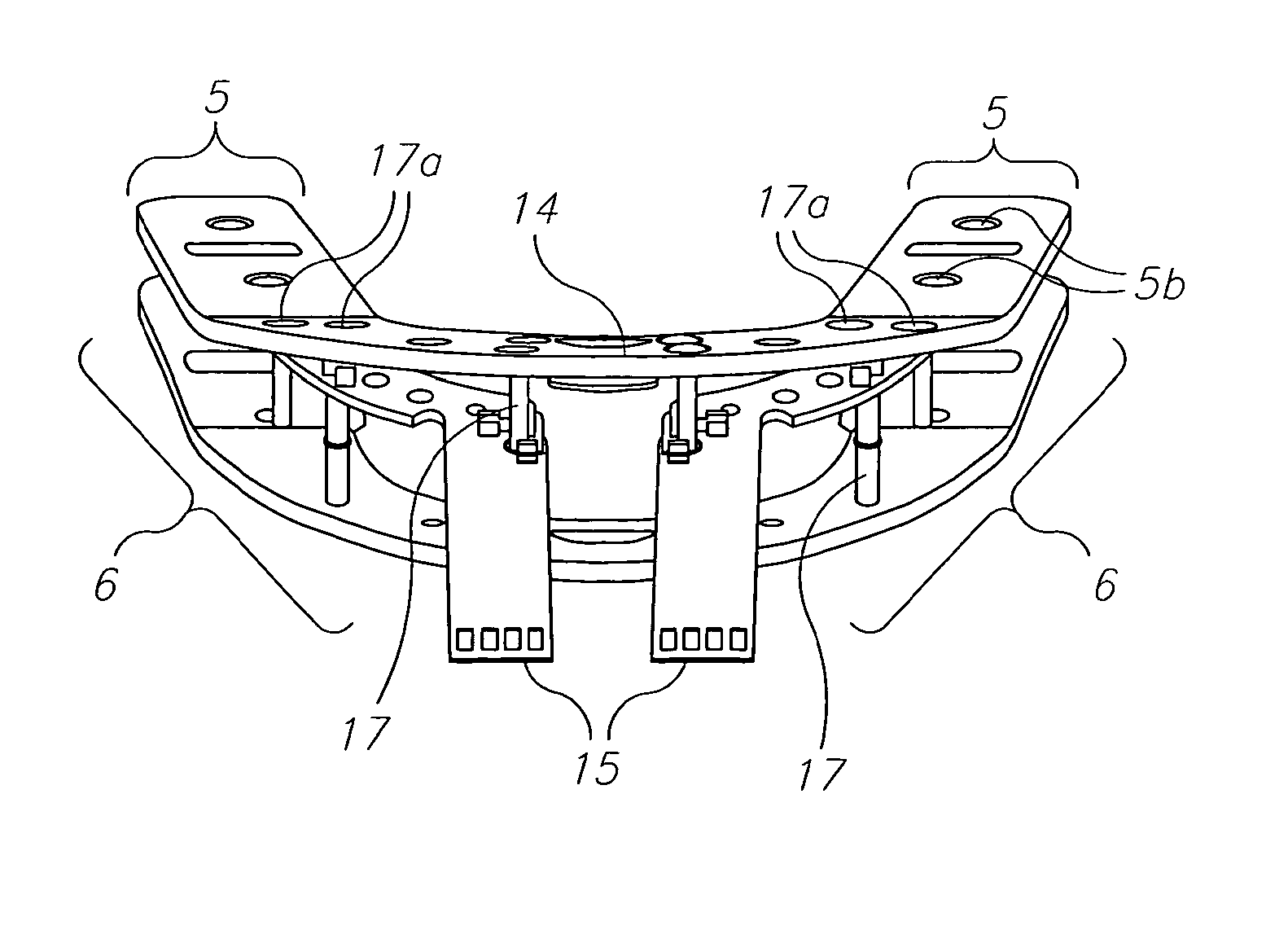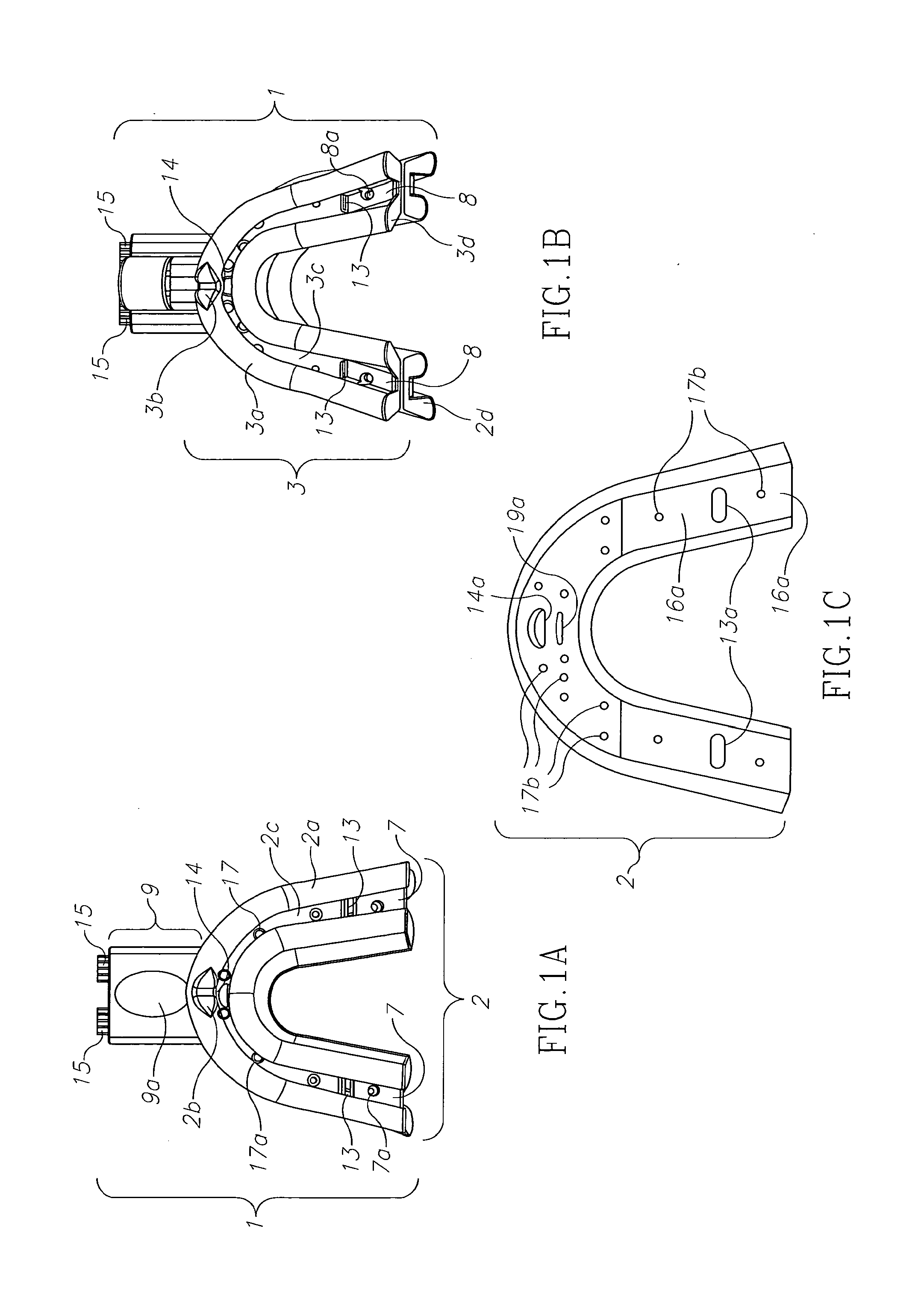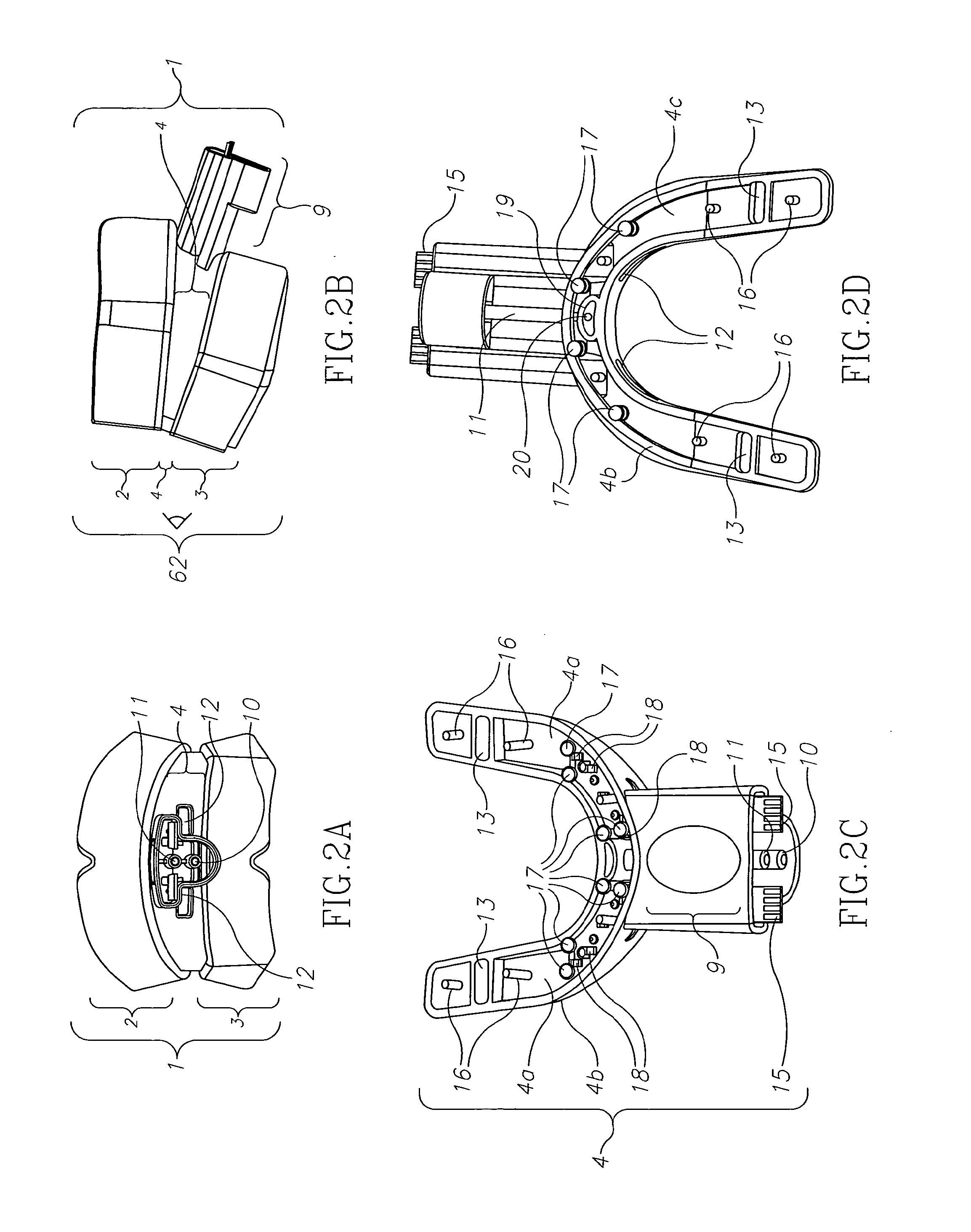This means that whatever whitening result that is obtained using the various whitening techniques currently in use cannot in general be customized to a given patient's needs based on the initial differing baseline color shades values of the teeth that the patient presented with prior to treatment.
It is therefore extremely unlikely to obtain a completely uniform final whitening result utilizing the current systems in use.
This reduces the amount of deactivation or breakdown by the
saliva of the active gel and so increases the chemical whitening effect of this professional whitening treatment in comparison to over the counter “stock” whitening trays (which are not as well adapted to the teeth and so allow a significant amount of
saliva to leak into these trays).
The above “home” treatment method requires the user to devote considerable time (as mentioned above) to achieve a moderate degree of teeth whitening, and due to the excessive
exposure time of the teeth and gums to the
whitening agents can often cause the teeth to become sensitive as well as irritating or chemically burning the gum and oral mucosal tissues of the mouth.
Many patients find the effort required to achieve a sufficiently “whiter teeth” result too taxing, and there is often a very
high rate of non-compliance, resulting in a poor final whitening result of the teeth.
This “power” teeth whitening technique typically takes around one hour
treatment time.
Additionally, an uncomfortable lip and
cheek retractor device is inserted into the mouth along with cotton rolls (and gauze as needed) in order to try and protect the rest of the oral tissues of the mouth from these highly concentrated and caustic
whitening agents.
These precautions are necessary, as contact of these highly concentrated chemical
whitening agents used in the “power” whitening with the above mentioned soft tissues of the mouth will, in a few seconds, cause significant chemical burning and pain to the patient.
The whitening agent is applied in an open “non-compressed” paint-on manner onto the external buccal surfaces of the limited teeth to be treated and so does not have the whitening advantages of the compression effect of the whitening gel using trays as described previously (home whitening technique).
This is due to the limited natural elasticity of the lips and muscles surrounding the mouth which limit the number of teeth that can comfortably and safely retracted and exposed to the
light source and the highly concentrated “power” whitening
chemical agents while still protecting the soft tissues of the
oral cavity from these highly caustic whitening agents.
Due to the limitations already mentioned, it is common practice to find that only the top 8 and bottom 8 front teeth are “power” whitened for a total of 16 (only 50%) of the teeth often present in the patient's mouth, a distinct
disadvantage of this teeth whitening technique.
A further limitation of the treatment area is that in general the lights used in the “power” whitening can be positioned by the operator into the patient's mouth to illuminate mainly the buccal (front or outer) surfaces of the
anterior teeth while only poorly illuminating the lingual (back or inner) surfaces of these front teeth.
It is also extremely difficult for the dental practitioner to apply the “paint-on dam” protective
coating at the gum-line of the lingual “inner” surfaces of the
anterior teeth and almost impossible for the dentist to isolate the very active tongue with the current isolation devices and materials available in the dental field.
This means that these sensitive oral tissues are extremely difficult to isolate from the caustic chemical burning of the highly concentrated “power” whitening agents.
Moreover, the “power” whitening of only the buccal (outer) surfaces of the
anterior teeth adversely affects the overall final whitening result, as the natural enamel layers of the teeth (naturally found on both outer and inner surfaces of all the teeth) are naturally somewhat translucent.
This is a time-consuming procedure that often needs to be reapplied during treatment to properly protect the soft tissues of the mouth form these highly concentrated whitening agents.
Even with all this isolation effort, as mentioned above, it is typical to find some leakage and burning of the oral tissues of the patient resulting in temporary pain and discomfort to the patient; c. Due to the inaccessibility of the
posterior teeth and difficulty (due to the cheeks and tongue) of the posterior areas of the mouth, these whitening treatments invariably are restricted or limited (due to the extreme difficulty of protecting the
oral soft tissues surrounding the
posterior teeth) to the anterior segments of the mouth; d. Whitens mainly the front (buccal) surfaces of the anterior teeth and only rarely is used to whiten the inner (lingual) surfaces of the anterior teeth; and e. It is common to observe a more marked “rebound” effect (loss of whitening result)
after treatment with this “in office” treatment method as compared to the “home” treatment method.
This is due to the
short duration of treatment (as compared to the much longer
treatment time of the “home” treatment method) and the
resultant rehydration of the teeth
after treatment (the “power” whitening process tends to temporarily dehydrate the teeth which temporarily potentiates the initial whitening result).
This means that the typical final “whitening” result using the “power” whitening technique is significantly poorer then the final “whitening” result that can be obtained when the patient is highly compliant and uses the “home” whitening technique properly.
 Login to View More
Login to View More  Login to View More
Login to View More 


